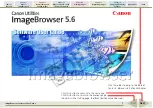
Understanding how the system identifies lines
241
Programming Operations Guide
Understanding how the system identifies lines
On a new system, lines and loops are numbered and assigned default
s
based on the type of media
bay modules that have been connected to the system. The exception is the voice over IP (VoIP)
trunks, which require a keycode to activate.
The Unified Manager displays all active physical lines under:
Lines, Physical Lines, Enabled Lines
.
These screens allow you to easily view which lines have been enabled through a media bay
module. (Refer to
“Configuring resources — media bay modules” on page 135
for information
about configuring media bay module records.)
From this heading, you can access each line record and assign attributes, as you require.
This section describes:
•
“Copying line programming” on page 242
•
“Determining which lines you need to program” on page 242
The following figure shows a detailed view of the Lines navigation tree headings.
Figure 55
Lines menus and fields
Lines
VoIP Lines
Enabled VoIP Lines
All VoIP Lines
Physical lines
Enabled Lines
All Physical Lines
Target lines
All lines
Line 001-492
General
Name
Control set
Use remote package
Restrictions
Line Restrictions
Normal
Night
Evening
Lunch
VoIP
Sched 5
Sched 6
Remote Restrictions
Normal
Night
Evening
Lunch
VoIP
Sched 5
Sched 6
Telco features
Voice Message Center
Trunk/Line Data
Trunk type
Line type
Dial mode
Received number
If busy
Prime set
Distinct rings in use
Distinct ring
Auto privacy
Trunk mode
Answer mode
Answer with DISA
Link at CO
Use auxiliary ringer
Full autohold
Loss package
Impedance (ohms)
Signalling
ANI number
DNIS number
Summary of Contents for BCM 3.7
Page 4: ...4 Software licensing N0008589 3 3...
Page 32: ...32 Contents N0008589 3 3 W 937 Index 939...
Page 46: ...46 Tables N0008589 3 3...
Page 64: ...64 How to get help N0008589 3 3...
Page 90: ...90 Manually activating Telnet N0008589 3 3...
Page 116: ...116 Delayed system restart N0008589 3 3...
Page 194: ...194 Configuring a data module N0008589 3 3...
Page 276: ...276 Setting line telco features N0008589 3 3...
Page 310: ...310 Using COS passwords N0008589 3 3...
Page 364: ...364 Enhanced 911 E911 configuration N0008589 3 3...
Page 380: ...380 Renumbering DNs N0008589 3 3...
Page 398: ...398 Saving wizard pages on your computer N0008589 3 3...
Page 458: ...458 Voice Mail settings N0008589 3 3...
Page 488: ...488 Setting system telco features N0008589 3 3...
Page 508: ...508 Other programming that affects public networking N0008589 3 3...
Page 522: ...522 PRI networking using Call by Call services N0008589 3 3...
Page 592: ...592 Monitoring Hunt groups N0008589 3 3...
Page 636: ...636 Configuring Double Density N0008589 3 3...
Page 640: ...640 Using the Network Update Wizard N0008589 3 3...
Page 666: ...666 Importing and Exporting DHCP data N0008589 3 3...
Page 722: ...722 Restarting the router N0008589 3 3...
Page 726: ...726 Important Web Cache considerations N0008589 3 3...
Page 748: ...748 Configuring an Interface with NAT N0008589 3 3...
Page 794: ...794 IPSec N0008589 3 3...
Page 818: ...818 Configuring the Policy Agent characteristics N0008589 3 3...
Page 832: ...832 Firewall rules for Business Communications Manager with Dialup interfaces N0008589 3 3...
Page 876: ...876 ISDN Programming N0008589 3 3...
Page 1004: ...1004 Index N0008589 3 3...
















































